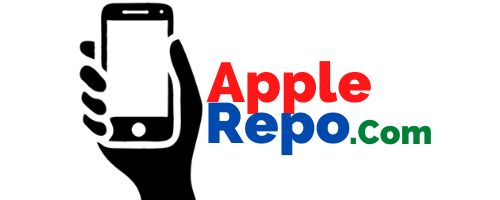In this post, we’ll look quickly at planning how the iPad and iPhone will connect to your Virtual Private Network (VPN). We’ll start by reviewing the VPN technologies the iPad and iPhone support, talk about settings you may need to change to make your VPN friendly to the iPad and iPhone, and finish by considering which users you should grant remote access to the network.
Read: best Free VPN for iPhone
Making Sure Your VPN Uses Suitable Technologies and Settings for the iPad and iPhone
The first step in planning the connection is to make sure your VPN uses one (or more) of the five widely used types of VPN that the iPad and iPhone support:
1. Cisco IPSec. Cisco IP Security is widely used for establishing secure VPN connections. With IPSec, you can use several different methods of authentication including x.509 digital certificates, RSA SecurID, and CRYPTOCard.
2. L2TP Over IPSec. Layer 2 Tunneling Protocol over IPSec gives good security and is widely used. With L2TP, you can use either a password or a shared secret for authentication.
3. PPTP. Point-to-Point Tunneling Protocol is the weakest of the widely used VPN technologies. Use PPTP only if you can’t use any other VPN type. PPTP uses a password to secure connections.
4. Cisco AnyConnect. Cisco AnyConnect VPN technology uses the Datagram Transport Layer Security (DTLS) protocol to provide security and performance over VPN connections. With AnyConnect, you can use either a password or a certificate for authentication.
5. Juniper SSL. Juniper Networks’ VPN appliances use Juniper SSL to secure the VPN connections. With Juniper SSL, you can use either a password or a certificate to secure the connection.
NOTE: When you use a certificate to authenticate a Cisco IPSec, Cisco AnyConnect, or Juniper SSL VPN, you can enable VPN on demand, which can be a big timesaver. VPN on demand makes the iPad or iPHone automatically establish a VPN connection when the user tries to access any of the domains or host names you add to the connection’s list.
If your VPN uses one of those five types, you’re halfway there. (Otherwise, you’ll need to add one of those five types to your VPN setup.) You should also take these three steps:
1. Check your VPN concentrators. Make sure they use VPN standards the iPad and iPhone support.
2. Check the authentication path. Make certain your RADIUS server or VPN authentication server is using iPad-and iPhone-friendly standards.
3. Use suitable certificates. If you’re using certificates for authentication, the iPad and iPhone can use PKCS1 format (files in the .cer, .crt, and .der file formats) and PKCS12 format (files in the .p12 and .pfx file formats).
TIP: To avoid problems, make sure your remote access routers and concentrators are runni9ng the latest firmware versions. Update them if they’re not.
Please get back soon as I am going to post some important instructions on how to set up your iPad or iPhone to connect to your VPN.
Check Out These Too:
- Apple Planning to buy Memory Chip Company Apple is apparently in the process of acquiring another new company which will likely help boost the company in a variety of different ways. Apple has always been working hard…
- How to Unlock Disabled iPad without iTunes How to Unlock Disabled iPad without iTunes - AppleRepo, Looking for a solution to unlock a disabled iPad without iTunes? You are here. It annoys you when you get the…
- How to Fix Network Connection Problems on iPad? How to Fix Network Connection Problems on iPad?. Some of the most common problems of iOS devices are the problems connected to network connection. No matter what the cause is,…
- Troubleshooting Wi-Fi with your iPod Touch One of the best things about the iPod Touch is that it can pick up Internet connections. But what if you're in a Wi-Fi area and still can't pick it…
- How to Connect iPhone to iPad How to Connect iPhone to iPad - What is going on everybody, in this article I would like to show you how you can connect or how you can link…
- Top 10 iPhone Security Tips For iOS 12 Top 10 iPhone Security Tips For iOS 12 - Apple Repo, iOS applications are known for their high-end security features. Most of businesses or company that have their iOS app…
- How To Sync Your iOS 8 Device To iTunes Via Wi-Fi Okay! So the newest iOS 8 is finally out, and every one is itching to try out the feature that it's boasting of - the wireless syncing ios 8 iphone,…
- The iPad Project in the United Kingdom A multi cultural society It seems that everyone in the world is living in Britain. Although the indigenous people might mourn about it, the reality is that this is not…
- Apple iPad 2 on Sale Today Following the release of the original iPad from Apple last year, they have now created the fantastic iPad 2 device which is packed with new features. Apple announced the release…
- Report: No 7 Inch iPad Next Year Given the wild success of various Android tablets that are smaller than the iPad many analysts began to consider the fact that Apple may release a 7 inch iPad. There…
- The 4 Most Common iPad Problems and How to Solve Them The 4 Most Common iPad Problems and How to Solve Them - Apple Repo, Like any other electronic device, the iPad can present problems when executing some of its functions.…
- Apple to use Carbon Fibre for iPad 2 There has been a lot of talk about the iPad 2 just lately and of course, Apple have not given anything away as of yet. However, most of the talk…
- How to Share Wifi On iPhone How to Share Wifi On iPhone - AppleRepo.com, Did you know that you can share the Internet from your iPhone or iPad so you can use them as a modem…
- Tips to know for iPad Even if at the iPad launch some people rushed to criticize Apple's new device, the PC tablet of American company managed in a very short time to revolutionize the global…
- Apple to launch Mac App Store December 13th According to the latest rumours on the internet, Apple is thought to be planning the grand opening of their Mac App Store for Monday December 13th. Apple are one of…
- How to Share Wifi Password on iPhone How to Share Wifi Password on iPhone - AppleRepo.com, If you want to use your iPhone as an internet hotspot on your home network, you’ll need to share your WiFi…
- Apple Introduces Support Communities Over the weekend, Apple has taken the opportunity to completely overhaul the discussion forums that are available on their website and replaced them by something new and much better, they…
- iPad Likely to Get 4G LTE Before iPhone Apple has always been a little bit behind when it comes to network technologies so we aren’t exactly expecting to see a 4G iPhone in the near future but it…
- Apple Rejecting Apps That Track UDID Info Each Apple iOS device comes with a completely unique identification number called a UDID. For a while now apps have been accessing and tracking that identifier and now it appears…
- How to Make Your iPad More Secure While the iPad may be an ingenious device, there's no doubt that it is a very expensive gadget, and you most likely want to make sure that all the apps…
- Jaadu VNC App - Remote Desktop for Windows reviews Jaadu VNC App is developed by iTeleport, Jaadu is a virtual network client (VNC) application for the Mac, ipad, iphone and iPod Touch that allows you to view and control…
- How to Improve Your iPad's Wi-Fi Performance One of the most common problems found with the iPad, just a few short months after its release, is that users are surfing happily along online, when their Wi-Fi connection…
- iPad Says No Service - 7 Tips On How To Fix It iPad Says No Service - Thanks to modern developments and technological advancements, more and more usable technologies are currently out in the market. Technologies such as computers, iPhones, and iPads…
- iOS 14.5.1 and iPadOS 14.5.1 Latest Update Apple has released two new updates for your iPhone and iPad. These are minor changes with bug fixes and security fixes. What's new in iOS 14.5.1 / iPadOS 14.5.1? Apple…
- How to Get Apple iPad Books for Free So if there's one thing to be said for the Apple iPad, it's that it's a fantastic e-reader, right? Well, that may be true, but if you can't get books…
- How to Access a WiFi Wireless Network on an iPod Touch? What would you do if you have an iPod touch? Typically, you may answer me that you want to listen to music, right? That response can be correct because iPod…
- Use AirPrint for Wireless Print from Your iPad 2 The iPad, when it was released, had no built in functionality for printing. But the newer versions, and, of course, the iPad 2 (Apple’s flagship product), have a wireless printing…
- Navmii GPS Live UK - Great Navigation App for iPad… Navmii GPS Live UK - Great Navigation App for iPad from Navmii. It is always interesting to read a story about something small competing with the big one. This small…
- Apple Planning Media Event in January Today the news broke that Apple is officially working on a major media event at the end of this month. Nobody knows exactly what Apple is planning to announce or…
- Tethering iPhone for Windows Tethering though sounds like a very technical term but it is a very simple term used in the use of mobile technology. Tethering is basically using a mobile device to…

